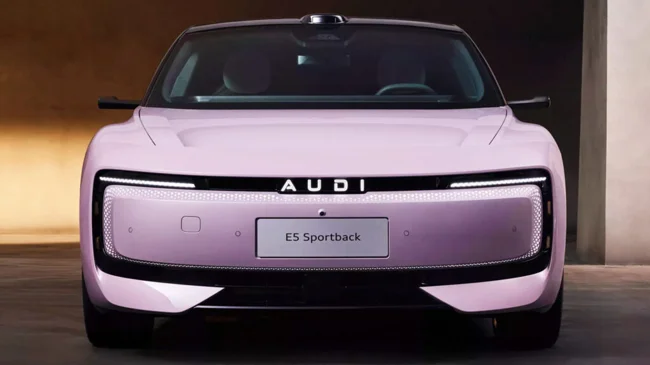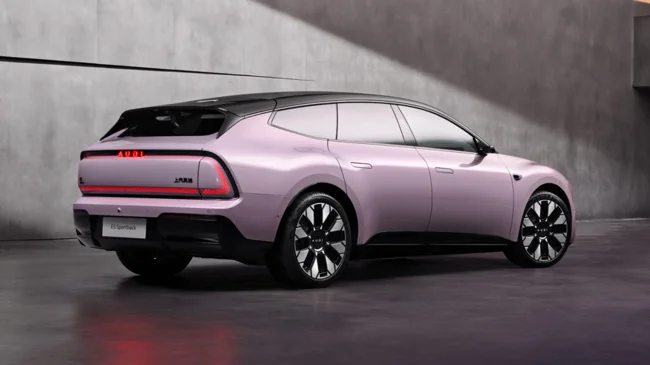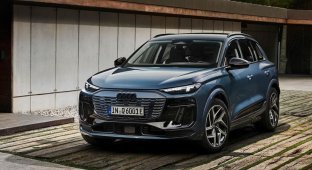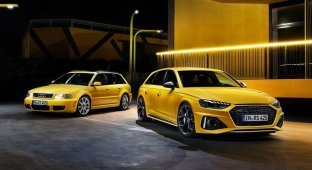Audi has more secrets behind its $33,000 Chinese electric car than just cheap labor (2 photos)

Electric Audi E5 Sportback Impresses with Affordable Price in China
The new electric Audi E5 Sportback has quickly gained popularity in China, receiving more than 10,000 pre-orders in just half an hour after its presentation. The main reason for this success was the unexpectedly low price, which is more in line with Toyota models than premium German electric cars.
Key model benefits
Availability and features
In China, the Audi E5 starts at 235,900 yuan, which is equivalent to about $33,100 or €28,211. That’s a very good deal for a luxury car that features a 76 kWh battery, a 295 hp rear-wheel drive motor, and a claimed range of 384 miles (618 km) under local testing standards.
Advanced features and features
Higher trim levels offer even more: power reaches 776 hp, and buyers get an immersive digital cockpit and software specifically tailored for Chinese consumers. The interior combines Alcantara with leather, and the tech list includes features typically found only on more expensive models.
For comparison, the most affordable Audi crossover in Germany is the Q2, a compact model that starts at €29,000 ($34,000 or 242,500 yuan) for the base version with a 116-hp 3-cylinder engine, including German value-added tax.
Unique for the Chinese market
Unlike Audi models sold in other regions, the E5 is exclusive to China and even has a new badge. Instead of the traditional four rings on the grille, it simply says “AUDI” – a deliberate departure from tradition aimed at attracting younger, more tech-savvy buyers.
Auto industry expert Ferdinand Dudenhöfer described the move as “smart positioning” and a “liberating move,” arguing that traditional rings carry too much baggage from the past. 
Why the price is so low
While it may seem like the low price is due to cheaper labor in China, labor costs only account for about ten percent of the total cost of the car. In fact, a number of other factors help Audi keep the E5 affordable by Western standards: lower battery costs, significantly cheaper energy, and more efficient local production. In addition, Germany has a 19% value-added tax, while China only charges 10% for conventional cars, and in some cases zero for electric cars.
Another important aspect is that manufacturers in China are willing to work with much lower margins than is customary for German brands. If a car like the E5 were produced and sold in Europe, its price would probably be double, if not more.
Complexities in the European market
In Germany, the situation looks much more complicated. The automotive industry is going through tough times: Audi plans to cut around 7,500 jobs by 2029, Mercedes is carrying out a deep restructuring, and Porsche is putting its electric car plans on hold. BMW is doing a little better, but has also cut thousands of temporary jobs.
According to a recent study by EY, Germany’s automotive industry lost more than 50,000 jobs last year, or about seven percent of its workforce. Compared to pre-COVID levels, the sector now employs 112,000 fewer people. No other domestic industry has suffered such losses.
The outlook for German manufacturers
In this context, Audi’s decision to launch a separate brand in China looks bold and telling. Rivals BMW and Mercedes are now under pressure, as if the price difference becomes too big, customers may switch to Audi. Experts warn that if German manufacturers do not learn how to build cars that appeal to customers – at the right price and with the right costs – they could lose their position in the global market. The future of the automotive industry is increasingly being determined in Asia, and without an effective strategy for China, German brands risk losing their influence.
The price of the Audi E5 Sportback in China is not only the result of local advantages, but also indicates deeper changes in the global automotive industry. Increasing competition from Asian manufacturers and changes in tax and energy policies may affect the strategies of European companies, forcing them to look for new ways to remain competitive. The success of models such as the E5 can become a model for future developments focused on specific market conditions and consumer needs.
























